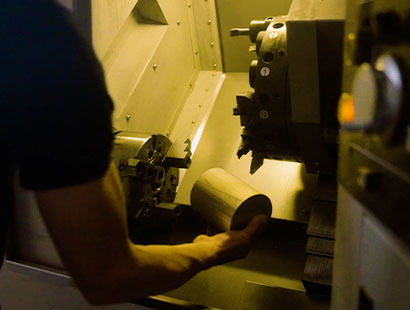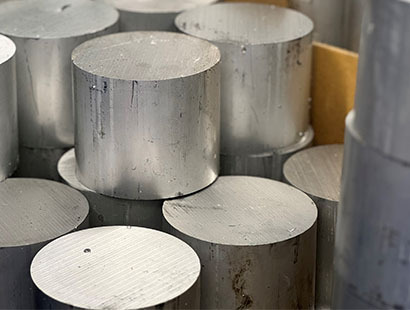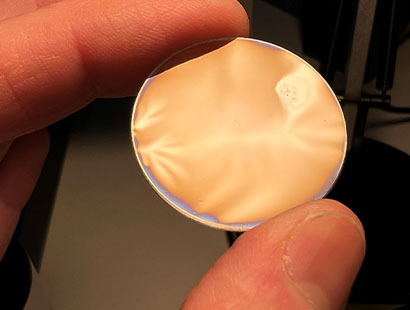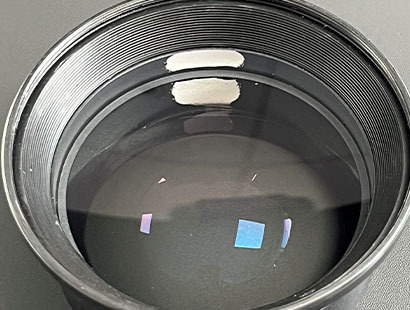How much does a lens rehousing cost?
If you’ve ever thought about rehousing a lens, this is probably the first question that comes to mind. There are lots of factors that influence the price of a rehousing including the complexity of the original optical design, research and development time, if common components can be used in the design, through to the labour intensive craftmanship of the build itself. Generally, TLS’s rehousing cost ranges from £4,400 - £8,195 per lens (in 2024) depending on the complexity of the design/manufacture and build. However, the majority or our prices are towards the lower end of that with the average sales price per rehoused lens in 2023 at £4,436. Let’s look at some of these factors and explain what we do at TLS to help you understand our pricing structure.

From the initial phase of research, design and development, through to the final quality check, everything needs to be controlled and done to the highest of standards. The design team must meticulously measure and disassemble the original lens to understand how each section is working and where any optical adjustments may be made. Once this phase is complete, they must start from the ground up with designing a new mechanical housing that will move the optics in such a precise way that there is no backlash or image shift. While designing, they will also improve the mechanical performance of the original lens, both from a serviceable point of view and reliability to handle the rigours of modern-day use. There are key challenges to face, such as keeping the lens as compact as possible while still allowing for internal focussing, keeping the front diameter consistent across the majority of the set, keeping the iris and focus gears in the same place (with relation to the film plane) across the set, physical restraints of what is possible to machine, weight considerations as well as visual aesthetic. Once this stage is done, the prototype gets manufactured, assembled and checked. Any adjustments that are necessary are done at this stage before the final designs are signed off. For a full set of lenses, this process can take up to 12 months.

During the manufacturing process, tight tolerances are a must. Generally, most components are manufactured within 0.02mm (0.0008”) tolerance, though some components need to be made with an even lower tolerance for their application. Due to these tight tolerances, and the need to keep all parts concentric, the best way to manufacture the components is from solid billets. High grades of stainless steel and aluminium are used, as well as brass and acetal where specific properties are required. At TLS, the machining is done in-house at Glasshouse in Leicestershire where we can quality control the whole process. Our skilled engineers have years of experience, and each operative is capable of programming, setting and running the machines. Components are manufactured in small batches and quality checked along the way.
The next stage of the process is the anodising of the aluminium components. There are several different grades of anodising depending on the desired hardness and aesthetical qualities needed. The anodising process adds hardness to the naturally soft aluminium while also protecting the metal from corrosion. The added bonus of anodising is that you can add dyes to the process, changing the colour of the metal. Generally, most components produced are coloured black, although you will see that some components are different colours depending on their purpose or aesthetic design. Furthermore, any internal components have an additional etching process when anodised. This has the advantage of creating a more matt appearance and reduces light reflections within the lens.
Once the components for the new housing have been manufactured and anodised, the lens can then be assembled. This is the point when your lens will begin it’s physical rehousing process, (learn more about the Lens Rehousing Process here). When floating elements are a part of the optical make-up of the lens, the build is even more complicated and uses more components than a single moving cell (learn more about floating elements here). Therefore, these will always be more expensive to manufacture, align and build.

Another factor that can influence the build is the condition of the original lens supplied. As most rehousing projects are working with vintage lenses, there are often times where the lens has deteriorated. This can mean that some elements have scratches or coating damage on certain elements. Many lens designs also include doublets into their optical make-up. This is where two elements, manufactured from different optical glass, are cemented together. Over time, this cement can degrade causing an unwanted visual appearance within the lens which also has a detrimental effect on the image. If a doublet is beginning to separate, the best option is to fully separate the two elements and re-cement them together using modern-day optical cement.
Another issue with vintage lenses is that some glass types used to be manufactured with thorium. Over decades the thorium degrades and leaves a yellow hue to the element(s) that it was used in. This process is reversable, although not fully, and can be done during the rehousing process. You can read more about our de-yellow process here.

Older lenses can also suffer with elements where the edge-blacking had deteriorated. This can be detrimental to the image, especially with regards to internal flares within the lens and showing on the image produced. On rare occasions this can be touched up, but the best solution is to fully remove the existing edge-blacking, prep the surface and re-apply a new layer of edge-blacking paint.
The rehousing of a lens is not a simple assembly process once the designs and parts are in place. Furthermore, at TLS it is not like a production line either. Each technician/engineer working on the lens has multiple tasks to complete using a range of skills. Doing the initial lens assessment take knowledge and skill that is only gained from experience with lenses. The optical components of the lens are nearly always irreplaceable too, creating demand for high precision and skill while handling the process. Therefore, each technician requires at least 12 months of training before they’re starting to produce rehoused lenses for customers. This process is even longer for the more complicated lenses that use floating elements and require more skill and knowledge to align and tune the lens for best optical performance.
The skill, experience, and knowledge of the whole team at TLS is incorporated into the cost of each rehoused lens. Now you should have a good understanding of the costs involved with rehousing lenses at TLS, as well as the explanations to understand what goes into each lens.
If you’d like a quote or more information on our pricing structure, please get in touch with us at sales@truelens.co.uk or call us on +44 (0)1455 848411.







